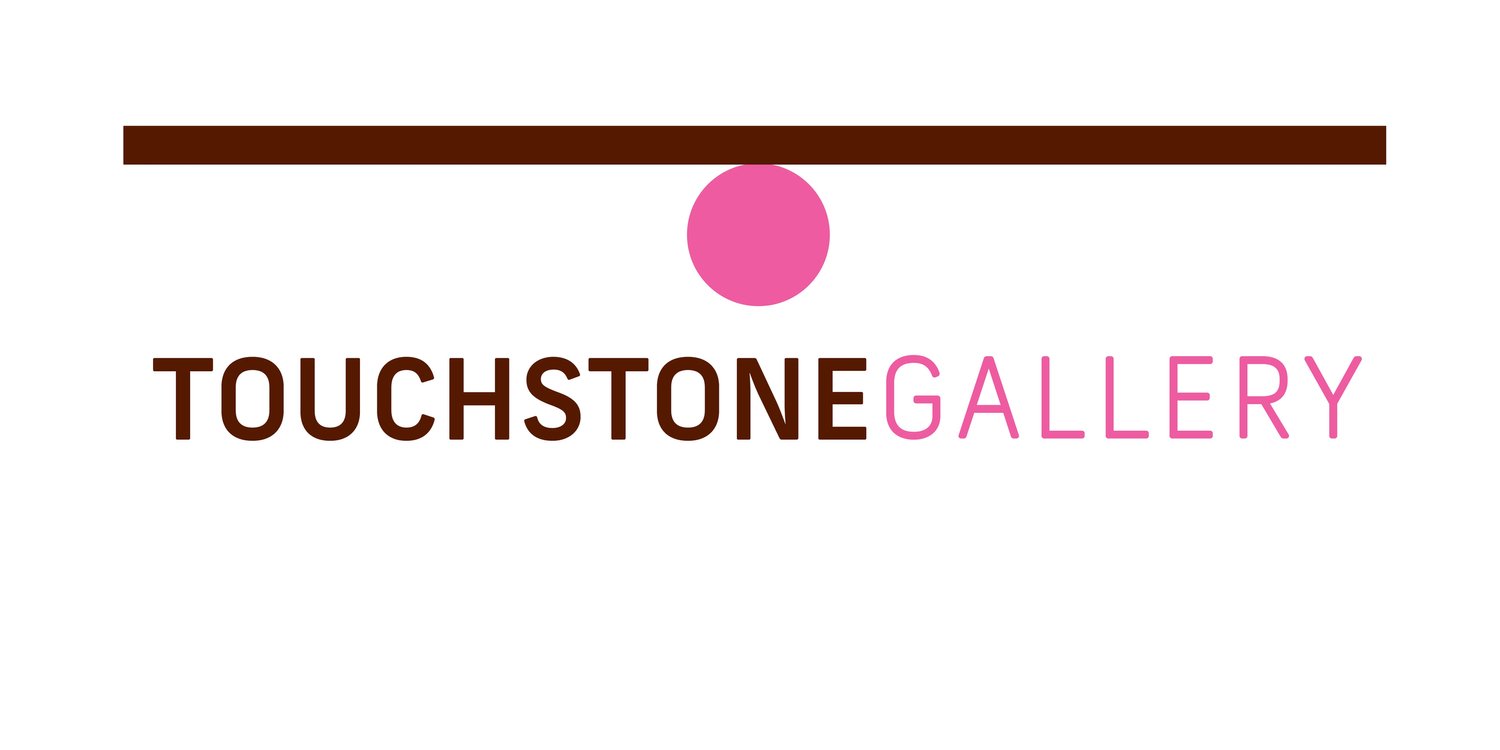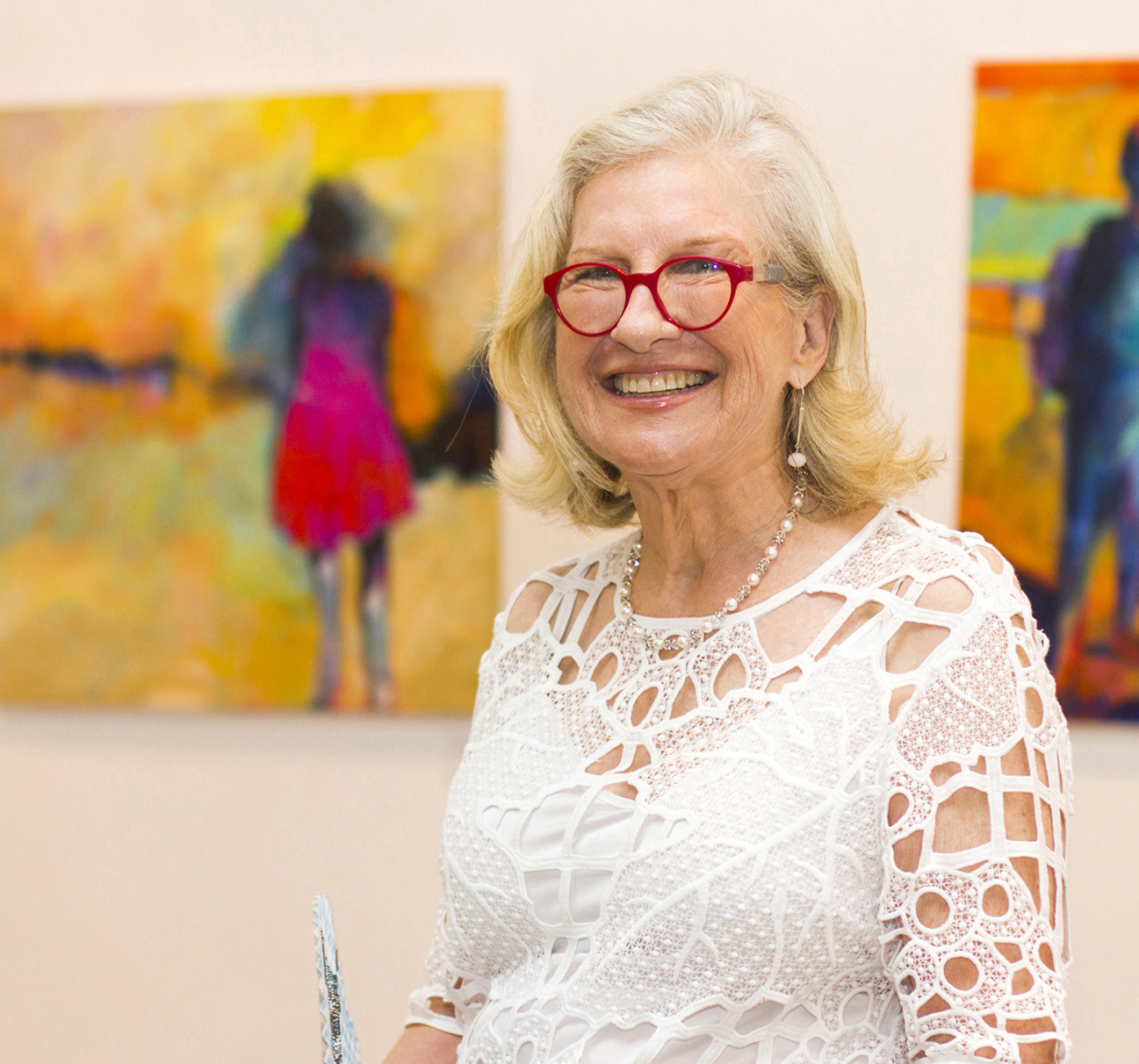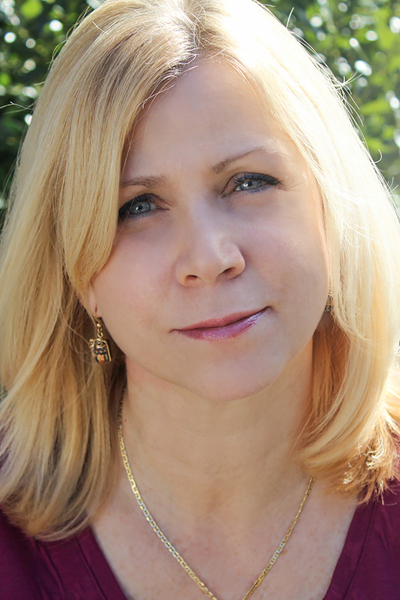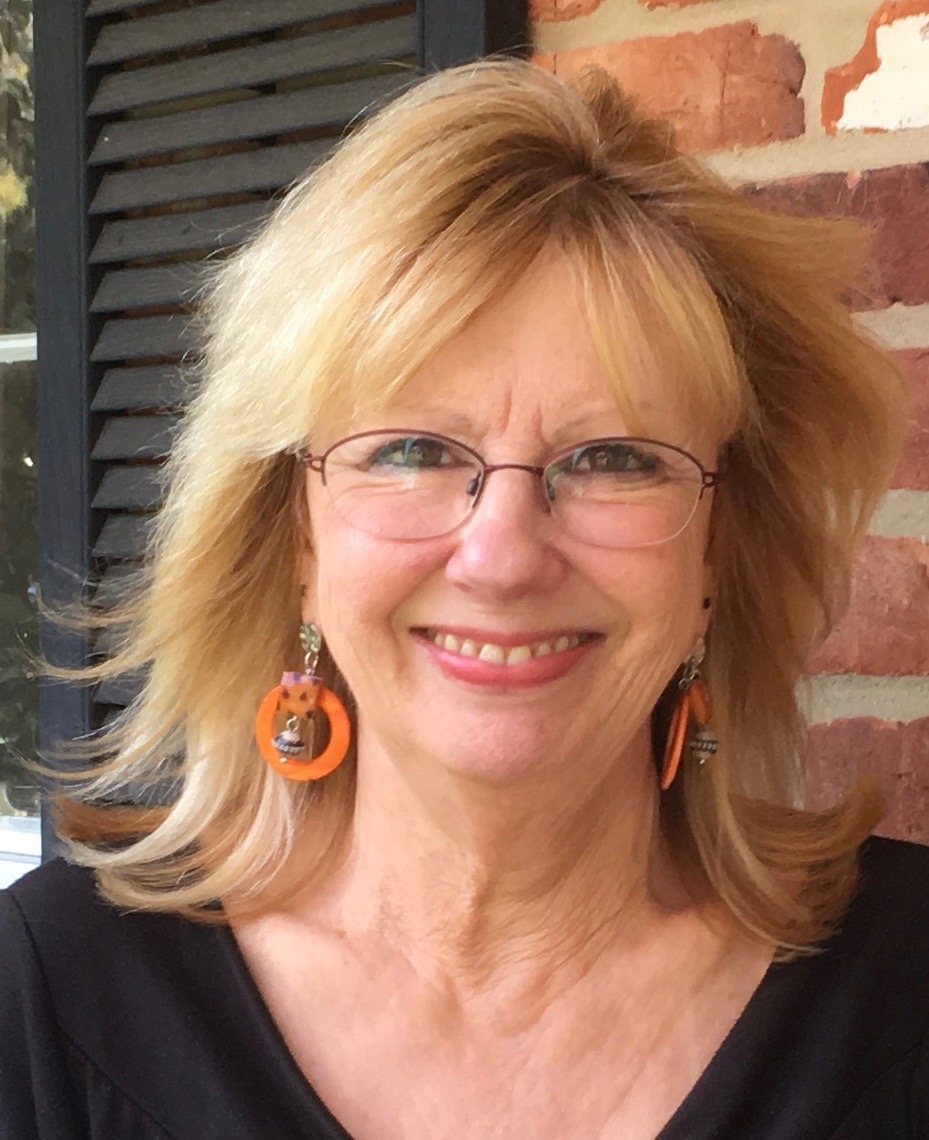When hearing about immigration, the word “crisis” comes to mind. Perhaps it’s because so many people are migrating everywhere in the world now. It seems like a new humanitarian predicament, but migrations have occurred in every age and time stirring the human population pot and generating conflict as well as new traditions and cuisines. In the late 1800’s for instance, the multinational population of Peru was transformed by an huge inflow of Chinese indentured laborers.
Read moreCarol Moore: A Printmaker's Response to the Natural World
Printmaker and Touchstone Foundation for the Arts Fellow Carol Moore presents her solo exhibition during the month of May 2018. This accumulation of work reflect's Carol's long standing exploration of nature in which she searches for a personal connection with the plant specimens that she collects and manipulates. As a child she always felt at home in nature, she would spend long hours in the woods playing in trees, foraging for “natural supplies” or crushing rocks under bushes. As an adult she continues taking refuge in the natural world and reveals her encounters and imaginings in her original lithographs and intaglio prints.
Read moreSusi Cora: Art from the Earth
Susi Cora’s May 2018 show Highwire at the Touchstone Gallery at 901 New York Avenue, Washington DC is a study of the impact of memory on one’s physical presence. The show features ceramic figurative and coneptual work, and composite photography.
Read moreMeg Schaap Paints Joie de Vivre
In her first solo exhibition, Marie Antoinette, at Touchstone Gallery Meg Schaap explores the personality, beauty and power of the last Queen of France. This project began by a reading of Marie Antoinette: The Journey by Antonia Fraser and then viewing Sophia Coppola’s 2009 movie Marie Antoinette. Both portrayed the compelling story of an Austrian teen who was forced to enter a political marriage with King Louis XVI, an introvert, pretty much her opposite. Meg’s painterly portrayals explore the quandaries Marie faced as she was swallowed up by the new French Court environment bound by outlandish rules, extravagance, and unbending traditions.
Read moreElaine Florimonte: Layering and Balancing
Elaine Florimonte is drawn to the simplicity and consistency of the horizon, specifically the proportions of sky, water and ground in paintings comprising her solo exhibition, The Pursuit of Balance at Touchstone Gallery, February 2018. Through her use of acrylic media and collage, she creates landscape images in an effort to find balance in an ever shifting world.
Read moreMaureen Squires: Partnering Painting with Words
While writing Touchstone blog essays, I ask the question, ”How do artists arise in America?” The answer, of course, is that exceptional artists come from small towns and large all across the land, predictably and unpredictably. I thought about this recently while driving the Pennsylvania Turnpike, where my attention alternated between fast-moving 18-wheelers and glimpses of green pastures sculpted from long-ago deciduous forests when horses were the main mode of transport. Road signs mention the small towns that are quickly by-passed.
Read moredana brotman: capturing the confluence of humble materials & insightful gaze
If we each open our eyes a little wider and really look at our environment, we begin to see a lot of packaging “stuff” that might be falling to the floor as we open a gift or other everyday objects--the worthy and useful objects we think important. We throw that packaging away mostly without really looking at it. But, even if the rest of the world ignores it, Dana Brotman does not. She’s actually attracted to many of those “stuffs” and now actually uses it in her art processes.
Read morePatricia Williams: Ordered Complexities
“Both science and art have to do with ordered complexity.” –L. L. Whyte, 1957
My September 2017 solo show was originally intended to be an abstract landscape series, but it turned into an homage to math and science. This happened because the people who decide such things declared March 14, 2015 to be the official pi (π) day. (Pi is the ratio of the circumference of a circle to its diameter and always equals 3.14159265359….) I met my husband Andy in engineering school, and while neither of us claims any particular STEM skills at this point in our lives, we had a vigorous discussion of this important issue over breakfast one morning, and we vigorously dissented. In our opinion, the official pi day should have been March 14, 2016. That’s because 2015 is truncated, and we believe it more appropriate to round up to 2016.
Read moreClaudia Samper Mixed Media Stories
Argentinian-born Claudia Samper reminisces on her early life in Buenos Aires. “As a youngster I was always drawing and creating things with my hands,” she recalls. “By the time I entered the university I didn't have many choices in Buenos Aires except for traditional career paths--medicine, education, law, etc. We of course did have a wonderful art institute, but it never crossed my mind to pursue art then.” The one track that suited her the most was architecture. After completing that 6-year degree program, she had acquired a solid base in both the technical and the art spheres of the curriculum.
Read moreJeanne Garant: Parallel Paintings
Touchstone oil painter Jeanne Garant paints abstractly. For a painter like Jeanne, abstract means to focus on a particular shape and color noticed at any given moment and then to discard the rest. She draws from the jumble of life rather than trying to capture it all in a photographic or three-dimensional way. Garant's attitude in creating the flat or one-perspective paintings, 275 Stripes, mirrors that of New England painter Milton Avery. “I try to construct a picture in which shapes, spaces, colors, form a set of unique relationships, independent of any subject matter. At the same time I try to capture and translate the excitement and emotion aroused in me by the impact with the original idea.”
Read moreMarcia Coppel: Conversations
Marcia Coppel's paintings are influenced by the color and spontaneity of Mexico. She loves to sketch in restaurants, cafes and on the beach. Her May 2017 solo, Connect/Disconnect 2, is about communication and the lack of it in today’s digital culture. The interactions (or isolation of individuals in the same space) could have been situated anywhere in the world. But since she loves Mexico and spends a lot of time there, she made drawings and paintings situated in that country.
Read moreJanathel Shaw: Portraits of Courage
Janathel Shaw’s April solo show, SOLIDAREity! is a reflection upon the status of Blacks in America: a series of figurative pieces and portraits of men, women and children looking boldly into the present and the future. Inspiration for this new series derives from the lost souls, activists and community of people who are part and parcel of the American landscape—people who enrich that landscape in both hidden and overt ways. The portraits incorporate texture, rich deep lines and are anchored in contrast. Several are rooted in a defiant solidarity of consciousness, soulfulness, and personal voice. Some are dark in tone in recognition of ongoing struggles.
Read moreLisa Tureson: Curiosity ---> Exploration ---> Creativity
Once Lisa Tureson decided to leave her career in the insurance industry, there was no stopping her from exploring and learning about the many techniques, materials and tools artists use to express themselves. Actually, she probably always did have a curious and exploratory bent. At age four Lisa often watched her artist-teacher mother at the easel. Thusly inspired, her first murals were created out of her mother’s lip stick on her sisters’ bedroom walls. Whether she was chastised for her use of the lipstick medium or praised for her ambitious wall-size art expression, this “project” proved a precursor to the large paintings in her present day solo exhibit Scribbles: An Urban Art Expression at Touchstone Gallery during March 2017.
Read moreApril Rimpo: Finding Different Perspectives
It’s been said that there are about 34 towns in 25 states named Springfield. Five of them are in Wisconsin and at least one is in Massachusetts. The latter is singular, because April Rimpo grew up there close to her grandparent’s home where paintings made by her grandfather graced the walls. When April drew pictures as a child, copying cartoon figures and exploring what the pencil could do, she received positive feedback from the family and teachers.
Read more“Hands On”: Touchstone Foundation for the Arts Fellows Make their Mark on Touchstone Gallery in 2017
This year the Touchstone Gallery artist members circles includes four Touchstone Foundation for the Arts-sponsored Fellowship members, two of whom will solo in June 2017. The four are Lionel Daniels, Susi Cora, Jo Ann Block, and Carol Moore. Each is working in a different medium and each is working towards a unique goal. Their work can be seen in each monthly Touchstone exhibit.
Read moreMary Ott: The Pull of Metallics
Mary Ott’s February solo exhibit “Metallics: Paintings and Prints” at Touchstone Gallery features artwork that includes copper, silver and gold-colored paints and inks. Mary’s techniques, whether on a smooth canvas base or a unique and textured paper, result in images of nature that seem influenced by the Zen of Japanese art, an art aimed at uncovering the essence of the object under scrutiny. In Mary’s work, grasses are singled out and isolated from complexities of a natural biosphere; then presented in a simplified space, elucidating the purity of seemingly simple life forms--forms often forgotten in our contemporary rough-and-tumble mechanical world.
Read moreSteve Alderton’s Fleeting Memories
Steve Alderton, in his third series “Memoryscapes: Blurry Lines III,” continues an exploration of landscape memories as viewed through the prism of time. In this final component, Alderton pushes his works until they become abstract and the focus is contemplative in nature. His acrylic paintings describe landscape qualities that are “felt” rather than defined as specific representational scenes our eyes see in the real world of land, sea or sky.
Read moreElaine Florimonte: Painting Layered Metaphors
Elaine Florimonte’s day often starts out over coffee in the morning while she touches base with some of her high school art students. They come in early to talk about the parallels between art and life and what to do when something goes wrong in a painting—philosophical stuff. “It’s a privilege to be present in their lives at these moments when 15 to 18-year olds are forming their identities,” she muses, “and I stay connected to about four or five each year, following their progress through college.” In the classroom Elaine teaches techniques and various media while coaching them through the standard processes of making art. Sometimes she picks up the brush and paints on her own canvas to get a point across, a technique she learned from one of her own teachers during her high school days. It was this particular teaching model that convinced her to study art and then become an art teacher herself.
Read moreJill Brantley: Creating Fresh Surroundings
The experience of playing freely during childhood must imprint itself indelibly in one’s psyche. So many artists and writers who grew up in small towns across America seem to have been fueled by these long lazy periods of spontaneity as children. I put Jill Brantley among those so endowed. She was fortunate to live in a small town in New England. No stoplights. Church steeples rising above oaks and maples. The whole nine yards. She remembers walking to school, riding bikes in the dark on summer nights, roaming with friends from yard to yard inventing games as they went along. Imagination sparking imagination. And a mother ringing a special bell at dusk.
Read moreGale Wallar Paints Avenues and Alps
Gale Wallar’s exactitude in describing what she sees around her is remarkable. Through the language of oil paint she creates compelling vignettes that put the viewer in the scene she is describing, as though present on the street in front of a row of buildings that she visited in one of her many years of travel. At some point, however, the viewer comes to the realization that the colors may be fresher and the perspective condensed. Wallar images the “real,” but, she remarks, her viewpoint “conveys a subjective reality affected by time and space.” In other words, the painted images may appear photographic, but subliminal qualities influence images in unexpected and compelling ways. Look for this in her attention to detail.
Read more


















